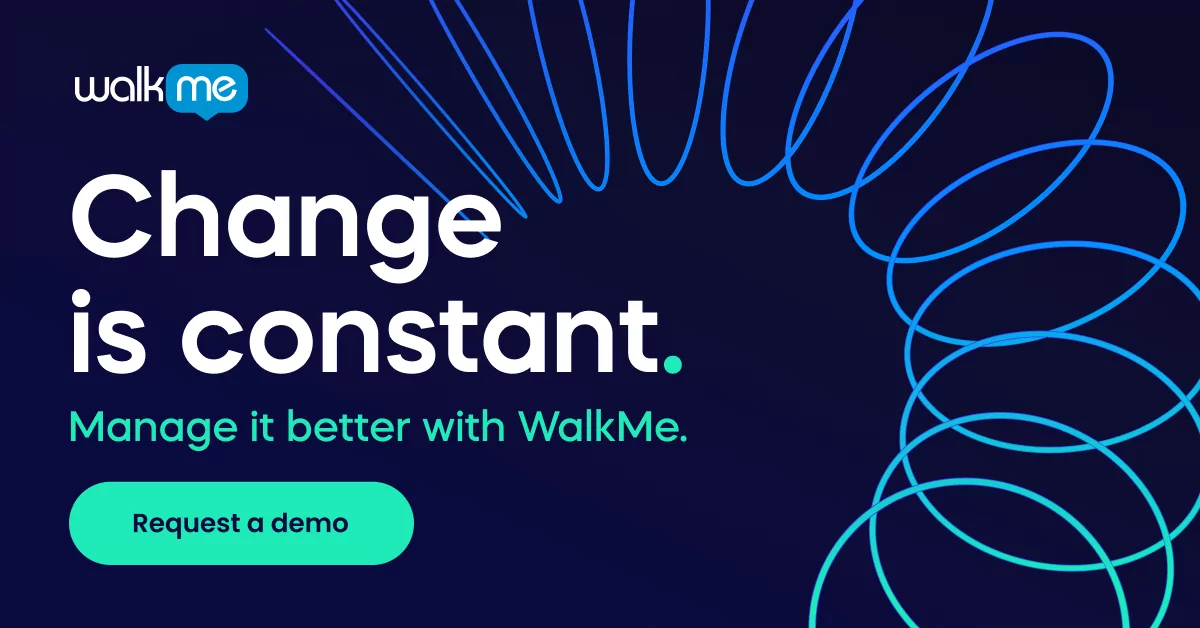In a recent conversation on WalkMe’s Podcast, This is Digital Adoption, Zoom’s CIO, Harry Moseley recalled a quote from his father:
“If you stand still, you’re really going backwards—because the rest of the world is moving forward.”
Business leaders across the world are having this thought amplified by the global pandemic. The option is to either change their digital strategies and adapt to the “Next Normal,” or fall behind.

The challenge of shifting to remote work presented a clear need for business solutions that could be accessed from anywhere. As a result, IT leaders had to reevaluate the ways in which they provided services and the tools their employees required in order to succeed. How leaders prioritize their software will set the precedent for the future of their companies.
Technological solutions that can drive efficiency have become a necessity for companies who want to stay ahead of the times. With immediate service expected by customers and employees alike, CIOs are looking to enable their workforces in order to keep up with demands.
In order to properly decide the best course of action, the top CIOs will look for clear and measurable data.
Step 1: Evaluate
In a recent study of Fortune 500 CIOs conducted by Constellation Research, analytics and business intelligence ranked right behind cybersecurity in their top five IT budget priorities for 2021.
Real-time, actionable data acts as a golden compass. It shows a live status of business performance, whether that be with clientele, or internally with employees. It directs leaders to make immediate improvements and achieve quick wins. But most importantly, it helps companies remain vigilant by providing a 360-degree view of their business landscapes.
In order to properly track and measure this information, it is absolutely necessary to follow entire processes, from start to finish.
In a Gartner study on measuring productivity, analysts reported, “If you’re just measuring employee application usage, you are missing crucial pieces of the puzzle. Insights on the complete user journey empower both executives and individuals.”
CIOs will be following analytics more closely than ever before in order to define the success of their organizations and measure the ROI they expect to achieve.

Step 2: Innovate
In the Constellation Research study (linked above), 67% of CIOs believe they will become more influential in the process of corporate or IT innovation as a result of the pandemic.
As technology progresses, new digital solutions will continue to find their way into every facet of the workforce. This naturally expands the strategic reach of the CIO, giving them the opportunity to enable their entire organization through digital transformation.
“The single clearest signal from CIO Survey 2020 was that digital transformation is now the leading budget priority for CIOs” – Dion Hinchcliffe, Vice President and Principal Analyst at Constellation Research.
This evolution is not only about the implementation of new technologies, however. It also can mean finding new and innovative ways to capitalize on current investments.
Much like how many sit-down restaurants are using their kitchens to provide delivery services during the pandemic, CIOs are finding ways to revamp their current infrastructure to provide a user experience that suits the situations of their companies.
Many are turning to Digital Adoption Platforms (DAPs) to breathe new life into their legacy systems by modernizing the user experience. At the same time, DAPs can also integrate with the most recently-released applications to ensure they are used as intended.
Innovation is born of necessity, and when entire organizations require technology to function, they will look to their CIOs for creative solutions.

Step 3: Adapt (and repeat)
In nature, that which does not adapt to its surroundings goes extinct. This is the same for companies in the world of business.
After the unexpected shock of 2020, CIOs have needed to learn to become agile. Not only by being ready to make sweeping changes when the time comes, but by creating business continuity plans with a focus on future-proofing their organizations.
Adaptation is the result of having the necessary awareness and information to shift one’s behavior. For CIOs in 2021, this can be derived from the accuracy of their evaluation process and the innovative solutions they will create for their teams.
Evaluate, Innovate, Adapt. This cyclical process will drive CIOs’ digital strategies for years to come.


